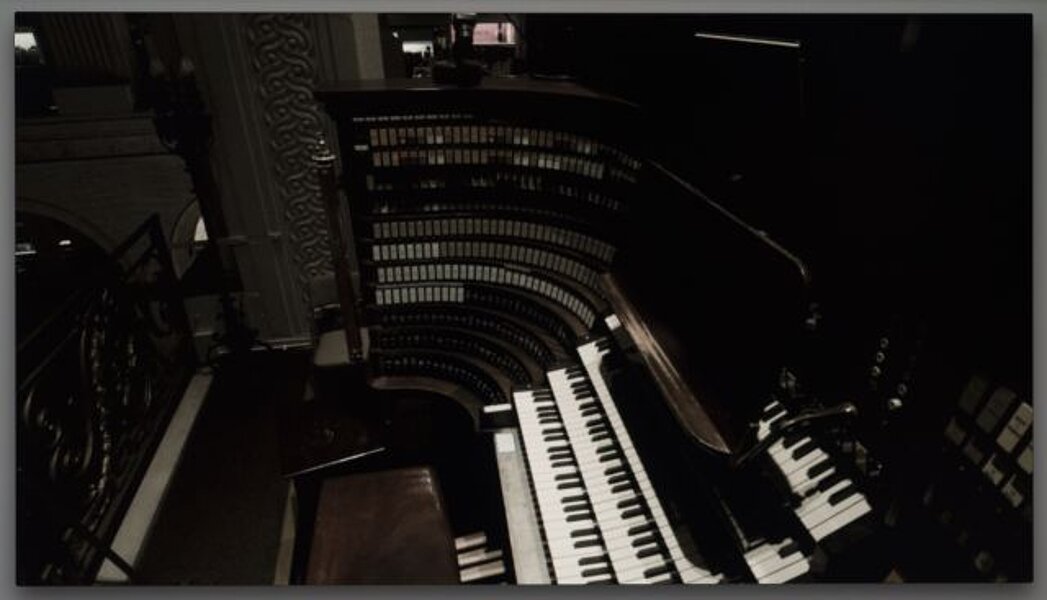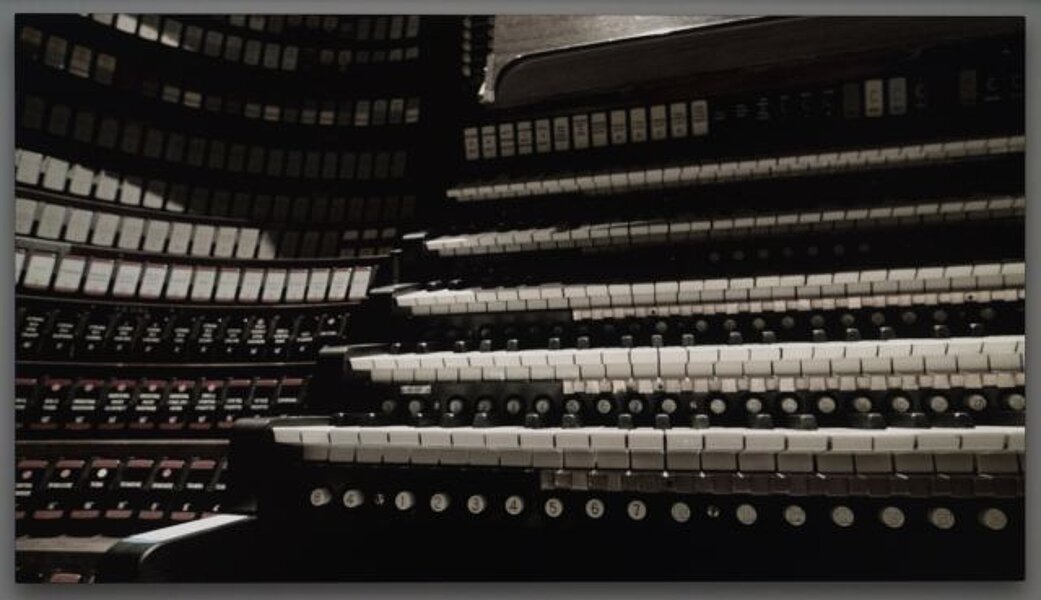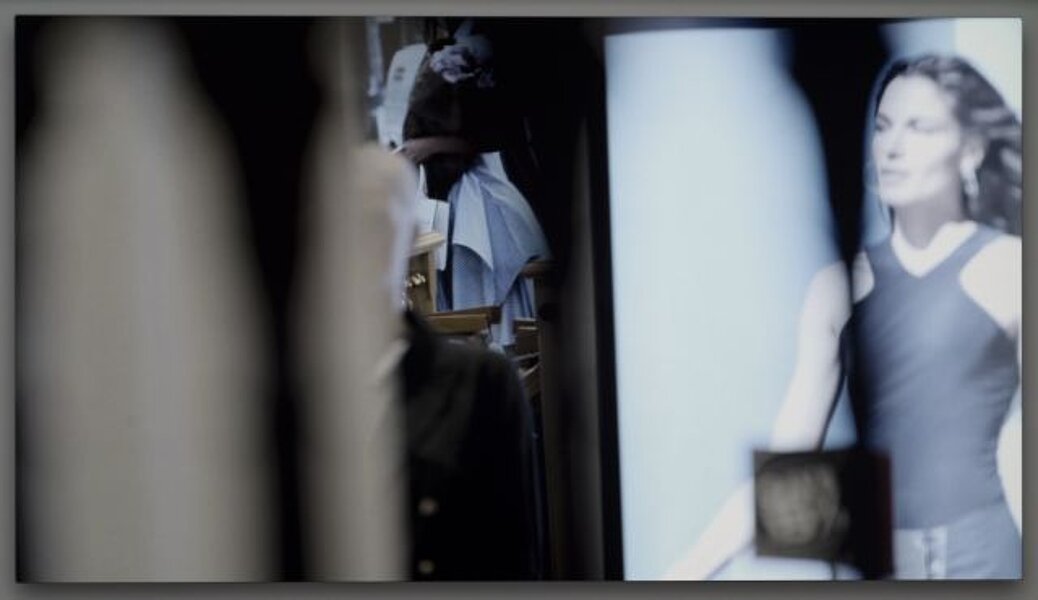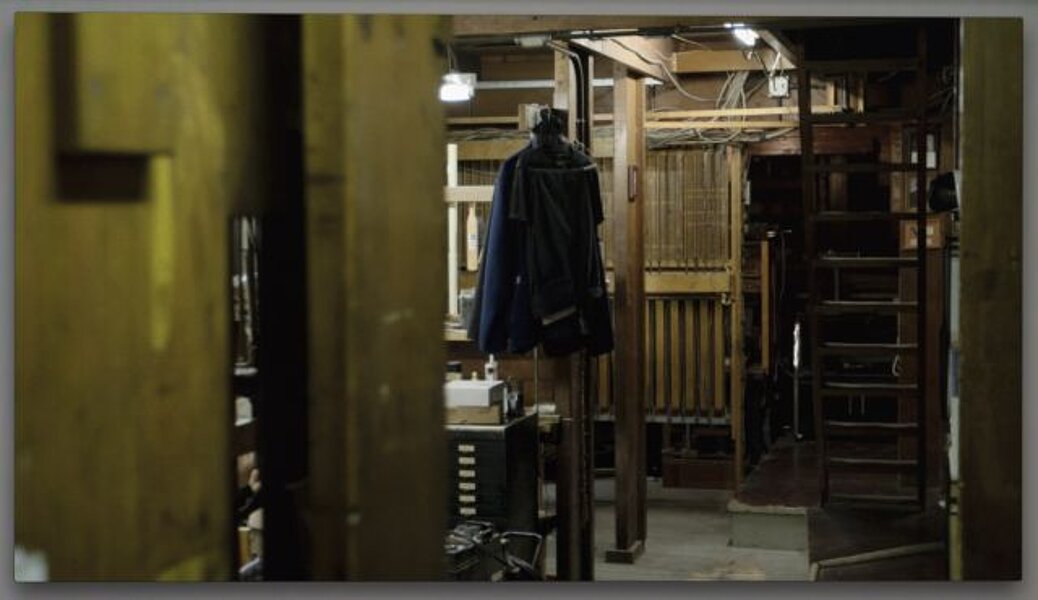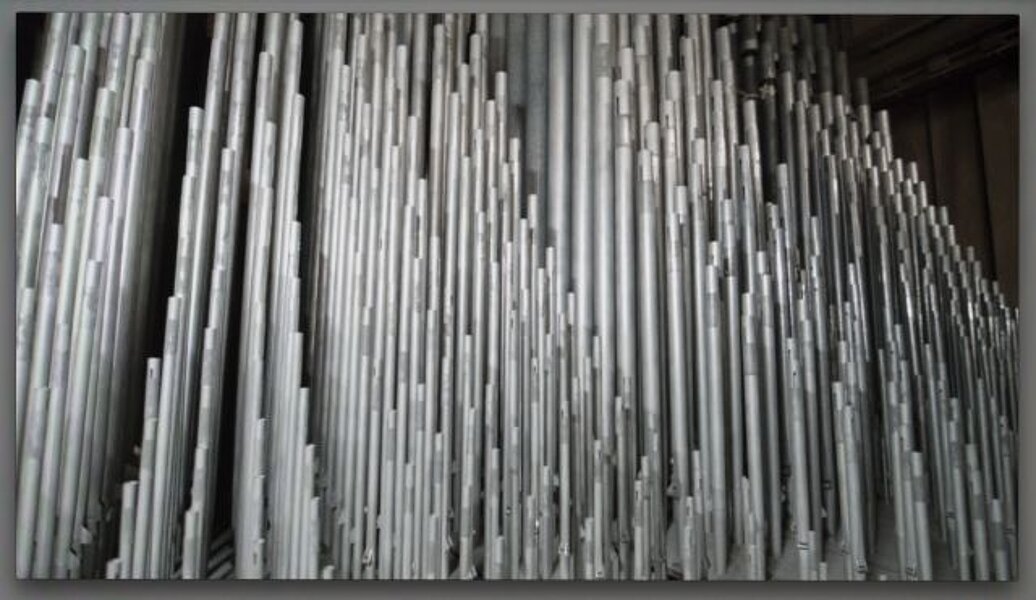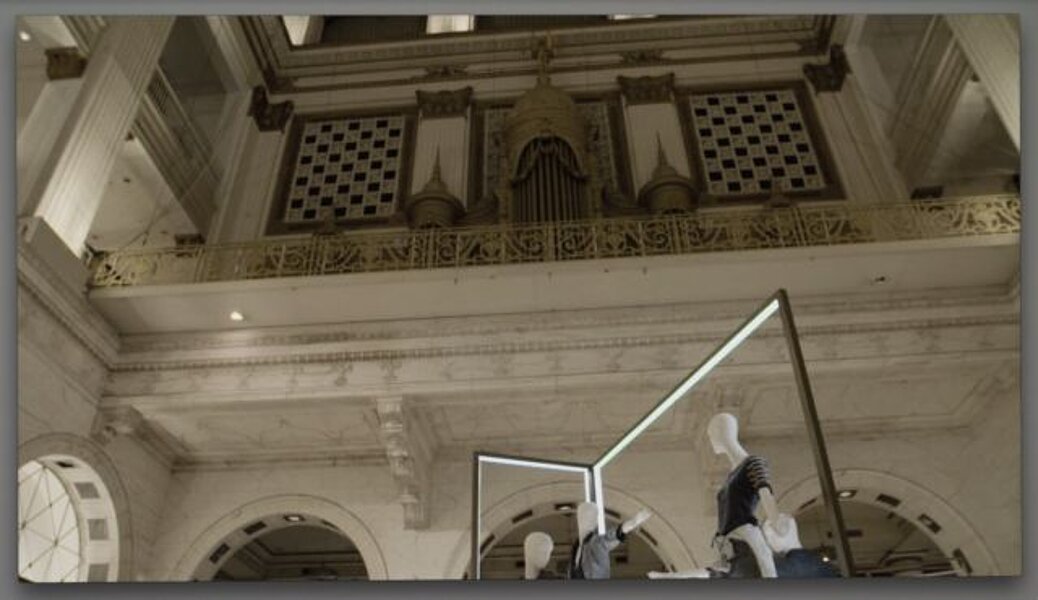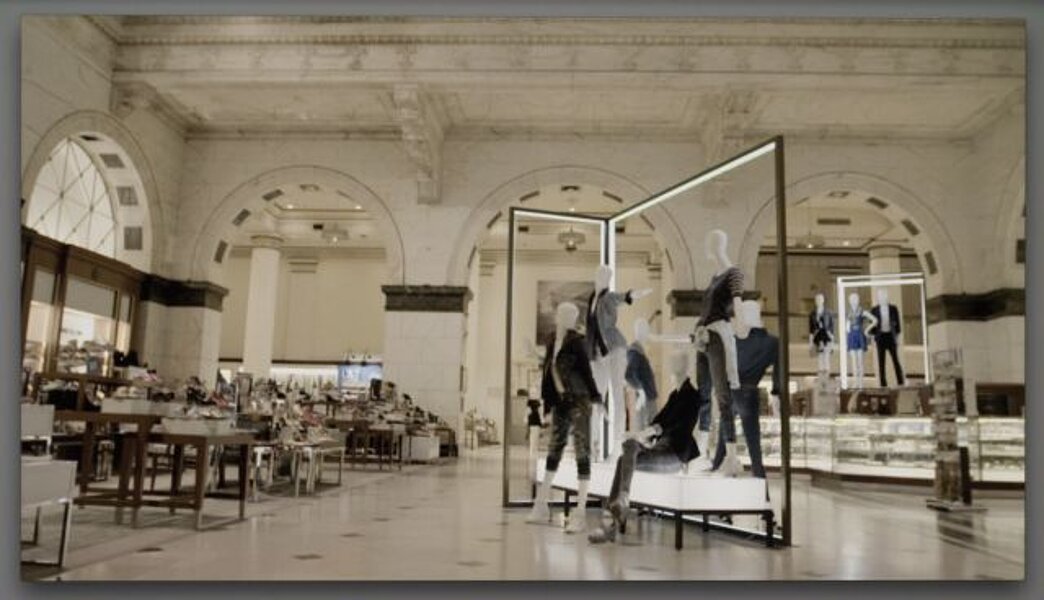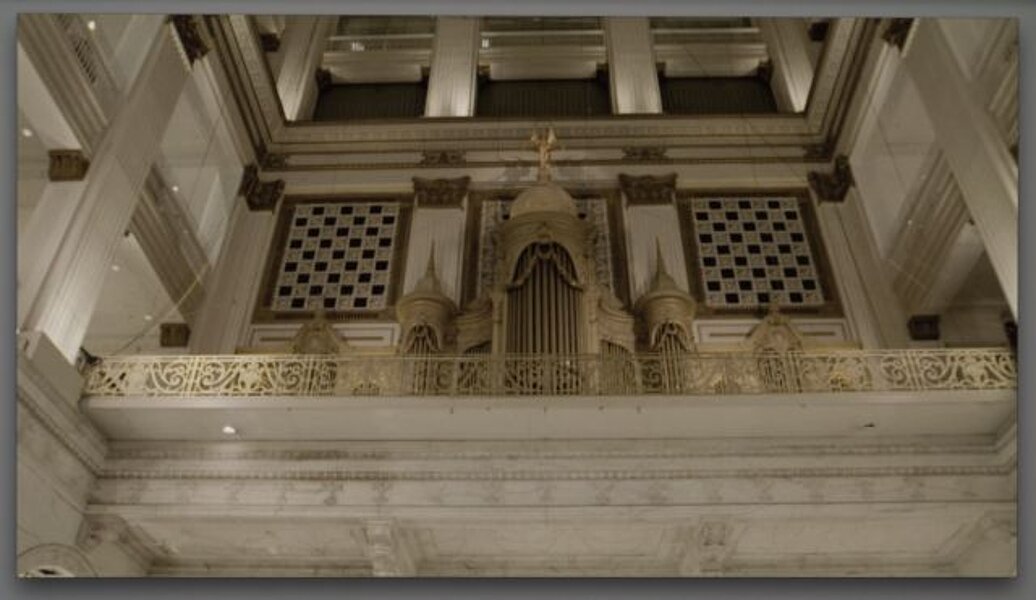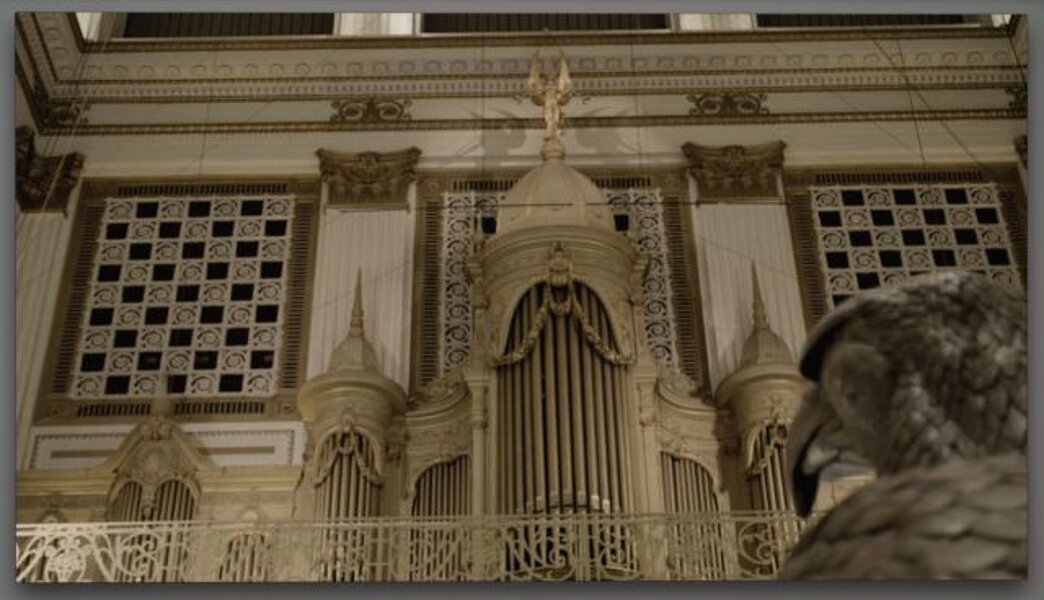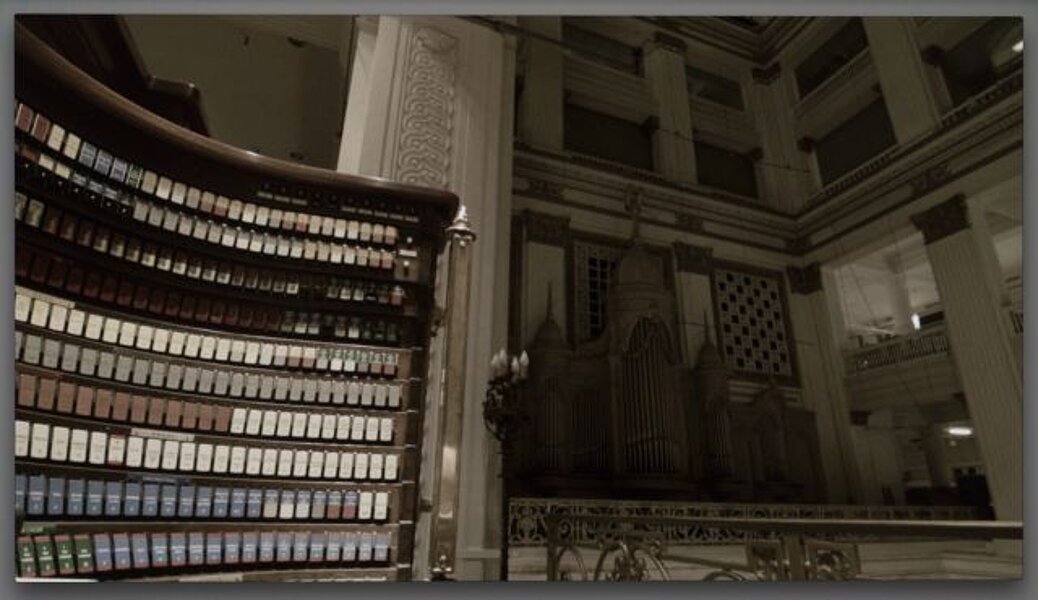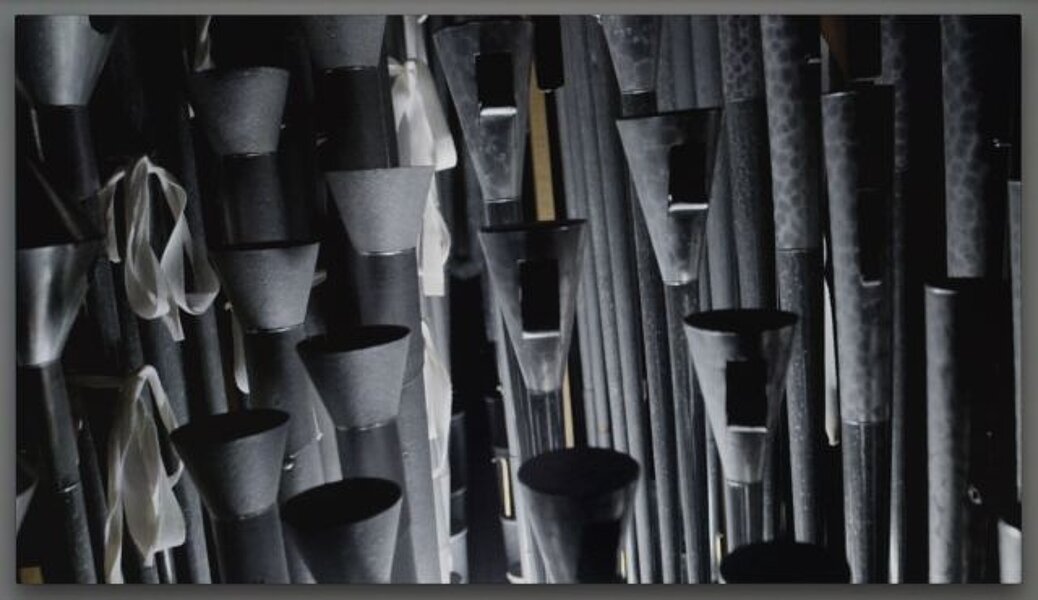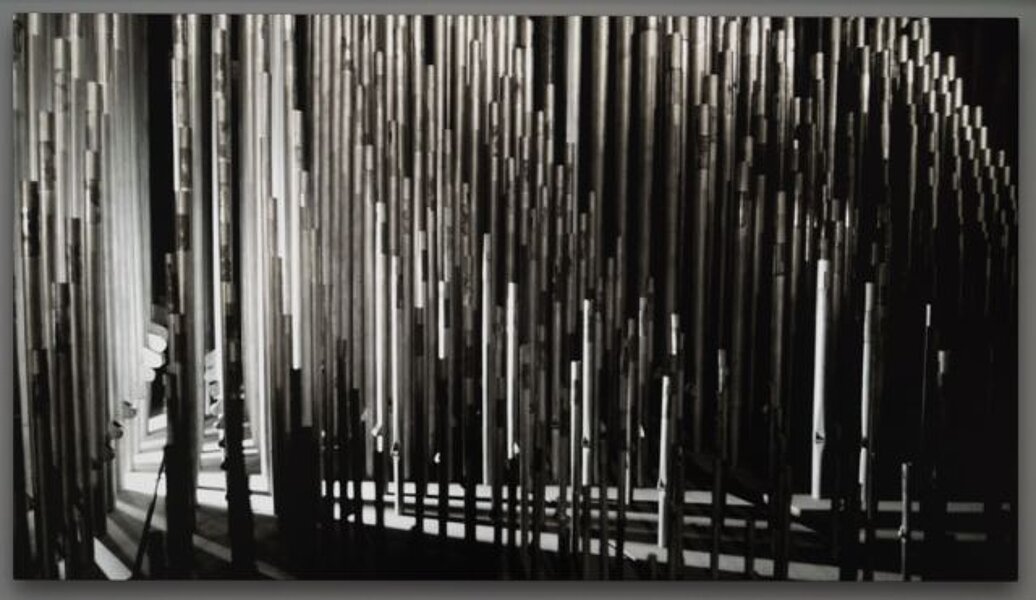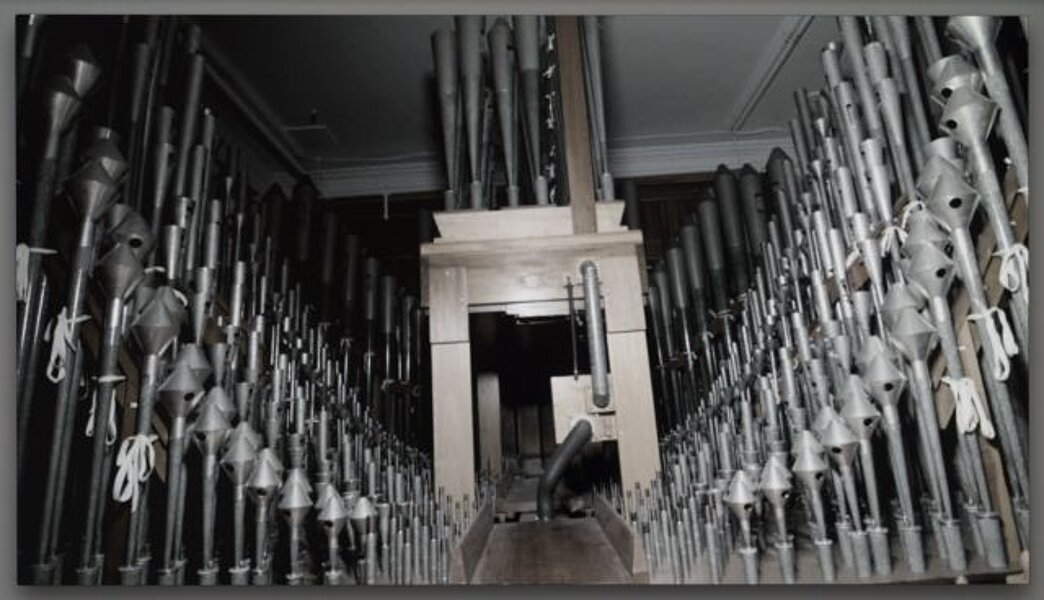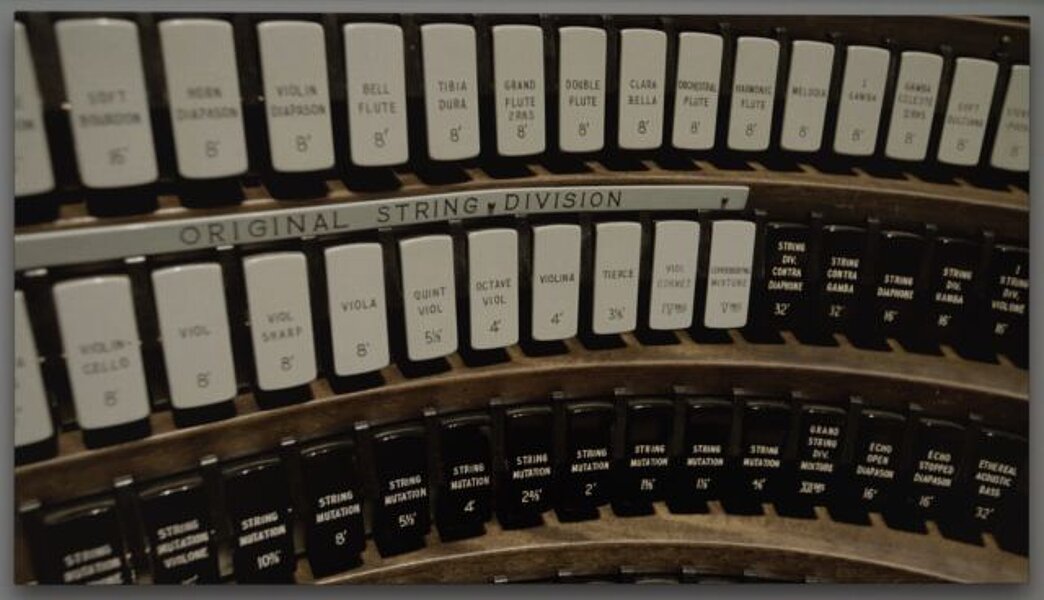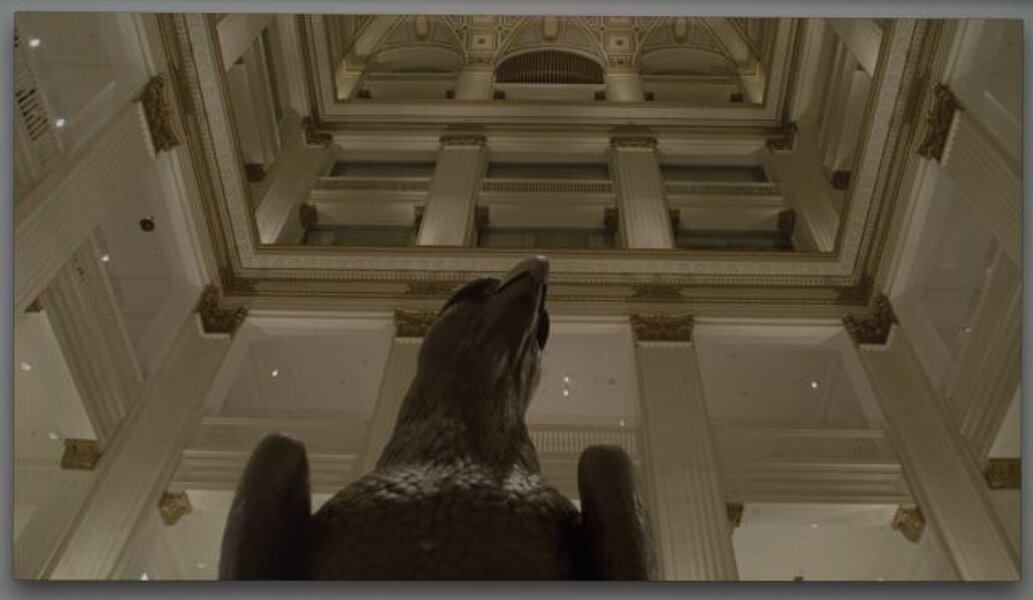
Hawser, Eloise
Untitled (Wanamaker Organ)
2016
| Object description | HD video, color, sound, 4 min |
|---|---|
| Object category | Medien-Video |
| Year of acquisition | 2016 |
| Inventory number | AV 252/0 |
| Creditline | mumok - Museum moderner Kunst Stiftung Ludwig Wien, erworben mit Unterstützung der Gesellschaft der Freunde der bildenden Künste |
| Rights reference | Hawser, Eloise |
| Further information about the person | Hawser, Eloise [GND] |
Eloise Hawser works with objects that may seem to be long obsolete, bringing these under new conditions into the context of contemporary art. Her work for mumok is based on her ongoing research on cinema organs. In her first exhibition in Austria, Eloise Hawser looks for the traces of the passing of time, by continuing her research on cinema organs. These were invented in the early twentieth century by the British telephone engineer Robert Hope Jones, and were frequently used in the age of silent movies as an alternative to musical accompaniment of movies by an orchestra. Often, cinema organs were built into the architecture of movie theaters. With the advent of the talkies, they became obsolete, yet were often too big and complex to be easily removed from the theaters. Hawser has already explored this forgotten musical instrument in her 2015 exhibition “Lives on Wire” at the ICA in London and in her film “Solo (The Burberry Wurlitzer)”. For mumok, she has made two new films based on her research into cinema organs, focusing on two silent cinema organs that today are found in former cinemas turned into fashion stores—the Burberry Shop in London (UK) and the former Wanamaker Department Store in Philadelphia (US). Hawser films these cinema organs that lie unused behind the scenes of contemporary temples of consumerism, and to do this she enters directly into the organs’ pipe chambers. These complex interiors make for a stark contrast to the “dressed” spaces of the fashion stores, with their plinths displaying carefully styled mannequins. The films seek to communicate ideas about the remotely controlled machines that hide behind the attractive facades of contemporary consumerist spaces. The chamber of each organ contains chromatic percussion instruments including xylophones, triangles, cymbals, and tambourines. Hawser brings these to life in her films and they begin to beat like hearts undergoing resuscitation. Hawser explores parallels between human bodies and machine mechanisms, and delves deeply into the “bodies” of cinema organs through exploring their innermost parts: the pipe chambers.
© mumok – museum moderner kunst stiftung ludwig wien
